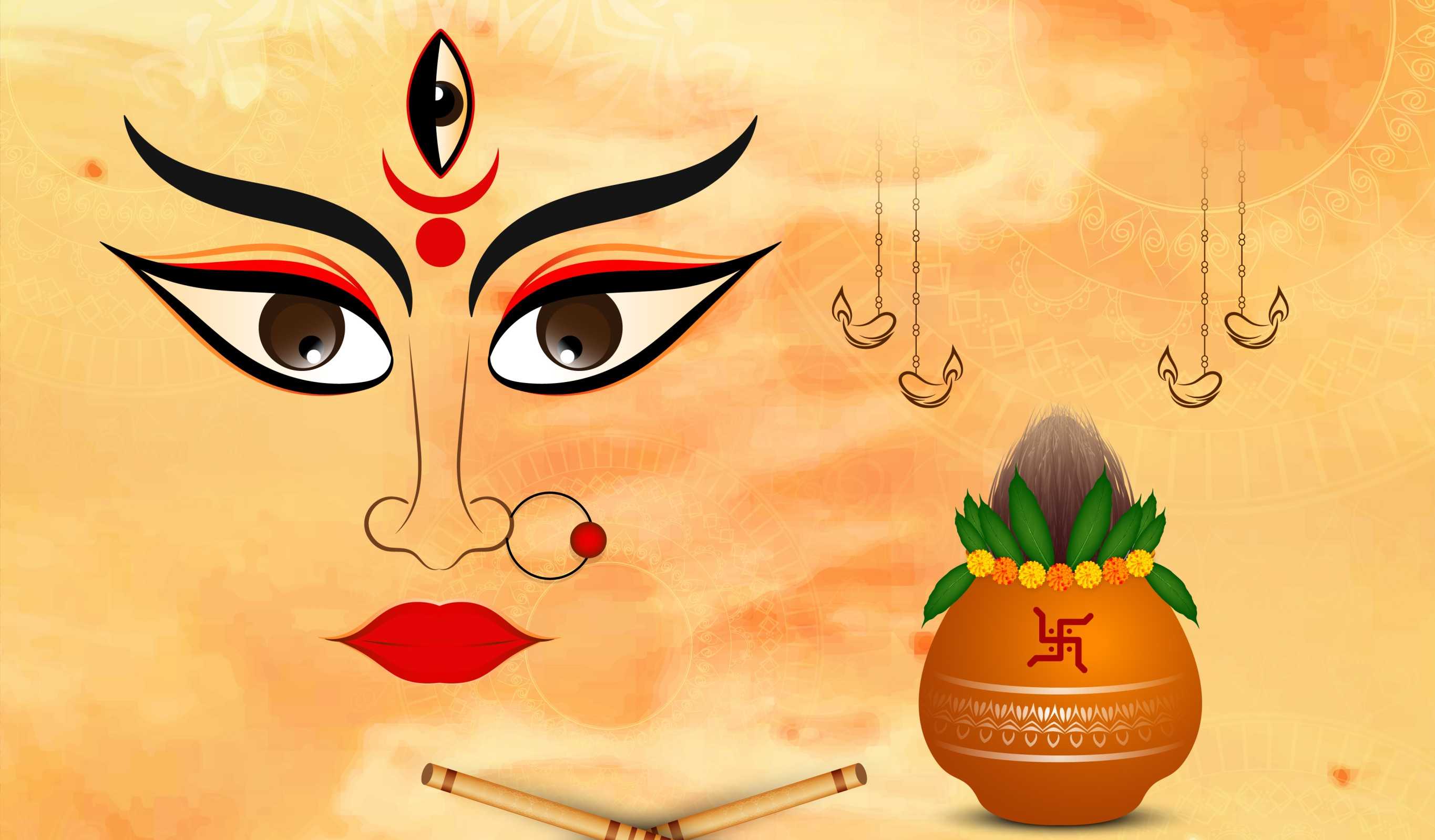Home News Special Occations Unveiling the True Meaning of Navratri in Indian Religion
15 October, 2023

Navratri, a nine-night festival celebrated with great enthusiasm and devotion in India, holds deep significance in Indian religion and culture. The word ‘Navratri’ means ‘nine nights’ (nav - nine, ratri - night), and these nights are dedicated to the worship of the divine feminine, shakti or embodiment of divine energy. While Navratri is widely known for its vibrant dances, sumptuous feasts and ornate attire, its real meaning goes far beyond these surface-level observations. In this article, we will delve deeper into Navratri to highlight its spiritual and cultural significance in Indian religion.
Navratri: Celebration of the Divine Femininity
Navratri is primarily a celebration of the divine feminine energy, often referred to as "Shakti". In Indian spirituality, the feminine aspect of the divine is considered the source of all creation and the ultimate power that sustains and nourishes the universe. This festival is a dedicated time to honor the various forms of the Goddess and seek blessings from her.
The nine nights of Navratri are divided into three sets of three nights each, dedicated to a different form of the Goddess. The first three nights are dedicated to Goddess Durga, who represents the power to destroy evil and protect the righteous. The next three nights are dedicated to Goddess Lakshmi, who symbolizes wealth, prosperity and well-being. The last three nights are for Saraswati, the patron goddess of knowledge, wisdom and arts.
This division reflects the cyclical nature of life – destruction, nourishment and creation, which are the basic principles of existence in Hinduism. During Navratri, worshipers not only pay homage to these gods and goddesses but also adopt their attributes in their lives. It is a time of introspection and self-improvement, aimed at developing the qualities represented by each form of the Goddess.
The Significance of Fasting
Fasting during Navratri is a common practice among devotees. It serves a dual purpose – as a physical discipline and a spiritual endeavour. Fasting purifies the body and mind, allowing devotees to connect with God on a deeper level. Abstaining from certain foods and indulgences is believed to increase a person's willpower and self-control, qualities that are important in any spiritual journey.
Many people avoid consuming grains, non-vegetarian food and even some vegetables during Navratri and choose a pure and light diet. Fruits, nuts and dairy products are commonly consumed during this period. This dietary discipline is a way to prepare the body for the energy and purity associated with the divine feminine.
Dandiya and Garba: Festive dances
Navratri is not only a spiritual journey but also a celebration of life. In many parts of India, especially Gujarat and Rajasthan, people come together to dance to the lively rhythms of Dandiya and Garba. Dandiya is a traditional dance where dancers, holding sticks, form a circle and engage in rhythmic footwork. Garba, on the other hand, is a dance in which people move in a circular formation, often using decorative earthen pots.
These dances are not just cultural expressions but have a deep spiritual connection. The circular structures symbolize the cyclical nature of life and the eternal rhythm of the universe. The vibrant music and energetic dance express the happiness and vitality that the presence of the Goddess brings to the lives of her devotees.
It is important to note that these dances are not mere entertainment; They are an integral part of the puja. The dance symbolizes the devotee's devotion to the divine and his attempt to merge his energy with the energy of the goddess. It is an ecstatic and cathartic way of connecting with the divine, often leaving participants in a state of bliss and inner peace.
Navratri and Cultural Diversity
One of the remarkable aspects of Navratri is its adaptability and inclusivity. Although it is deeply rooted in Hindu tradition, it transcends religious boundaries and is celebrated by people from different cultural and religious backgrounds. The festival encourages unity and harmony, making it a beautiful example of the cultural diversity of India.
For many people, Navratri is a time to wear vibrant and colorful attire, often adorned with traditional jewellery. Elaborate decorations and burning lamps in homes, vibrant community celebrations and captivating music promote an atmosphere of happiness, unity and togetherness.
The Role of Devotion and Prayer
The center of Navratri is the practice of devotion and prayer. Devotees perform aarti, sing bhajans, and pray to the goddess. These rituals create a sacred environment where individuals can immerse themselves in devotion and spiritual contemplation.
The worship of the Goddess is not limited to temples only; People set up temporary temples in their homes where they keep idols or pictures of the goddess. These shrines are decorated with flowers, incense and oil lamps, and daily rituals are conducted, often in the presence of family and friends.
Devotees also visit temples dedicated to the goddess to seek her blessings and participate in special aarti ceremonies. The energy in these temples is electrified, mantras and hymns echo in the air, creating a powerful spiritual experience.
The Victory of Good Over Evil
Navratri is the celebration of the victory of good over evil. It commemorates the story of Goddess Durga's fight against the demon king Mahishasura, who terrorized the world with his evil deeds. The Goddess with her immense power and divine weapons ultimately defeated the demon and restored peace and righteousness to the world.
This mythological story symbolizes the eternal struggle between good and evil, both on a cosmic level and within each individual. Navratri is a reminder that by seeking divinity and adopting the qualities of the Goddess, one can overcome negative forces in their life and around the world.
Conclusion
Navratri is a rich and multifaceted festival that encompasses spirituality, culture and tradition. It reminds of the eternal cycle of life and the importance of maintaining a balance between creation, sustenance and destruction. Through fasting, devotion and dance, devotees connect with the divine feminine and seek her blessings in their lives.
The celebration of Navratri transcends religious boundaries, welcoming people from all backgrounds to join the celebration and experience the joy and unity it brings. It is a time of reflection, personal growth and the victory of good over evil. In short, Navratri offers a profound opportunity for spiritual transformation and a deeper understanding of the divine feminine in Indian religion and culture.

